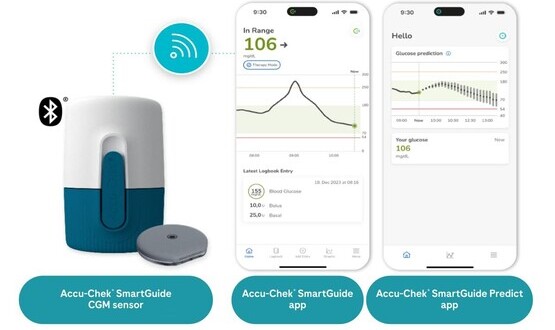ivWatch uses algorithm to reduce injuries from faulty intravenous lines
- 4 January 2024

Extravasation, the leakage of fluids such as chemotherapy drugs out of intravenous lines into the bloodstream, can cause serious and sometimes lasting injuries. An American company, ivWatch, is piloting a product in the UK and elsewhere in Europe that uses a predictive algorithm and multi-spectral light to lessen the risk.
Of the 90% of hospital patients who receive an IV during their stay, half of those IVs will fail, according to a white paper the company has published.
Nearly a quarter of the failures are due to infiltration, which happens when a catheter punctures or comes out of a vein, and leaks fluids or drugs into the surrounding tissue. Failure to detect the problem can lead to complications ranging from scarring to nerve damage to skin necrosis and amputation.
The problem is especially acute in neonatal hospital wards, where it is even more challenging for clinicians to place catheters in the tiny veins of their patients, Gary Warren, president and chief executive of IvWatch told Digital Health in an interview. Extravasation rates can be as high as 70% in NICU babies, according to a 2022 study in the Journal of Hospital Medicine.
The company’s product is a patient monitor that mounts on an IV pole, along with a series of sensors. It uses a signal processing algorithm that activates an alarm if it recognises the presence of an infiltration.
Studies in Italy and the Netherlands found that the use of the ivWatch system had the potential to allow infiltration events to be detected sooner than would be the case with intermittent observation alone, which is the current standard of care.
IvWatch’s Patient Monitoring System received US Food and Drug Administration (FDA) clearance for adult patients in 2015 and for paediatric patients in 2016. Its SmartTouch Sensor, a small, disposable sensor, and its accessories, was cleared by the FDA and was approved for a CE Mark in 2020.
Workforce pressures in the wake of Covid-19, and efforts to save money have exacerbated the risk of extravasation, Warren said.
“The experience base, with the pandemic, has flipped, so a lot of the experienced nurses are leaving the field, so you just don’t have the experience of inserting ivs,” he said.
In addition, some hospitals are moving from the more expensive process of inserting central lines – which are more labour-intensive and expensive to put in – back to the “very simple peripheral ivs that they put in your hand or forearm. And then they’re putting these caustic drugs in these inexpensive IVs. And then they go bad.”
An NHS resolution report in May 2023 found that the organisation received 444 claims relating to extravasation injuries in the ten years leading up to 31 March 2021.
The largest number of these (23%) were for paediatric injuries, and chemotherapy drugs were responsible for the largest percentage of settled claims. Half of all injuries involved bruising, with the next most common injuries involving scarring (14%) and tissue damage (12%).
In September, ivWatch signed a multi-year partnership with UK company Healthcare 21 Group to sell and distribute ivWatch’s system, as well as supporting clinical evaluations in the UK.
Frimley Health NHS Foundation Trust is currently conducting a clinical study of ivWatch, with early clinical results showing that the company’s technology had prevented at least 15 potentially serious extravasation injuries within a period of less than two weeks, according to the study’s lead investigator, nurse consultant Andrew Barton.




